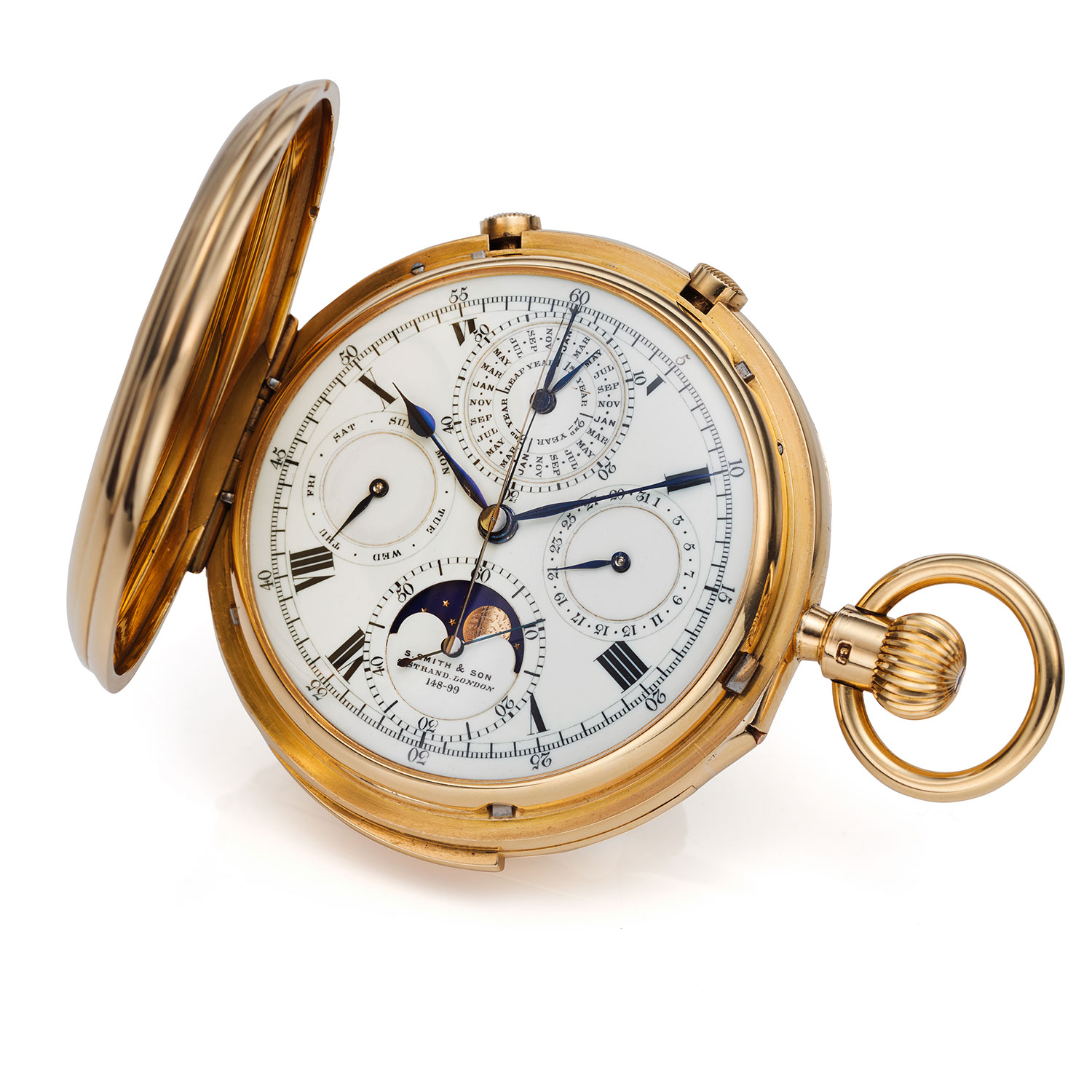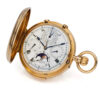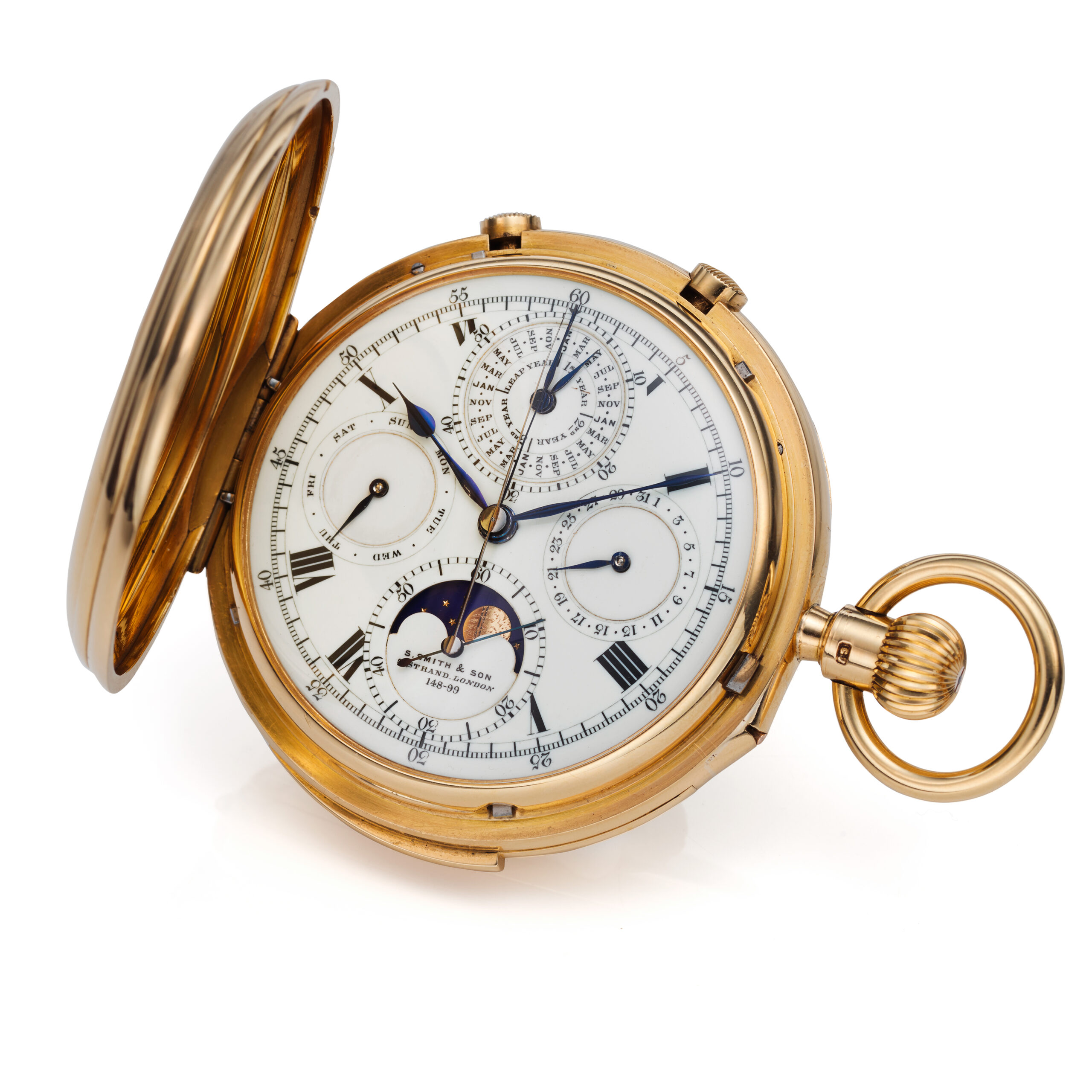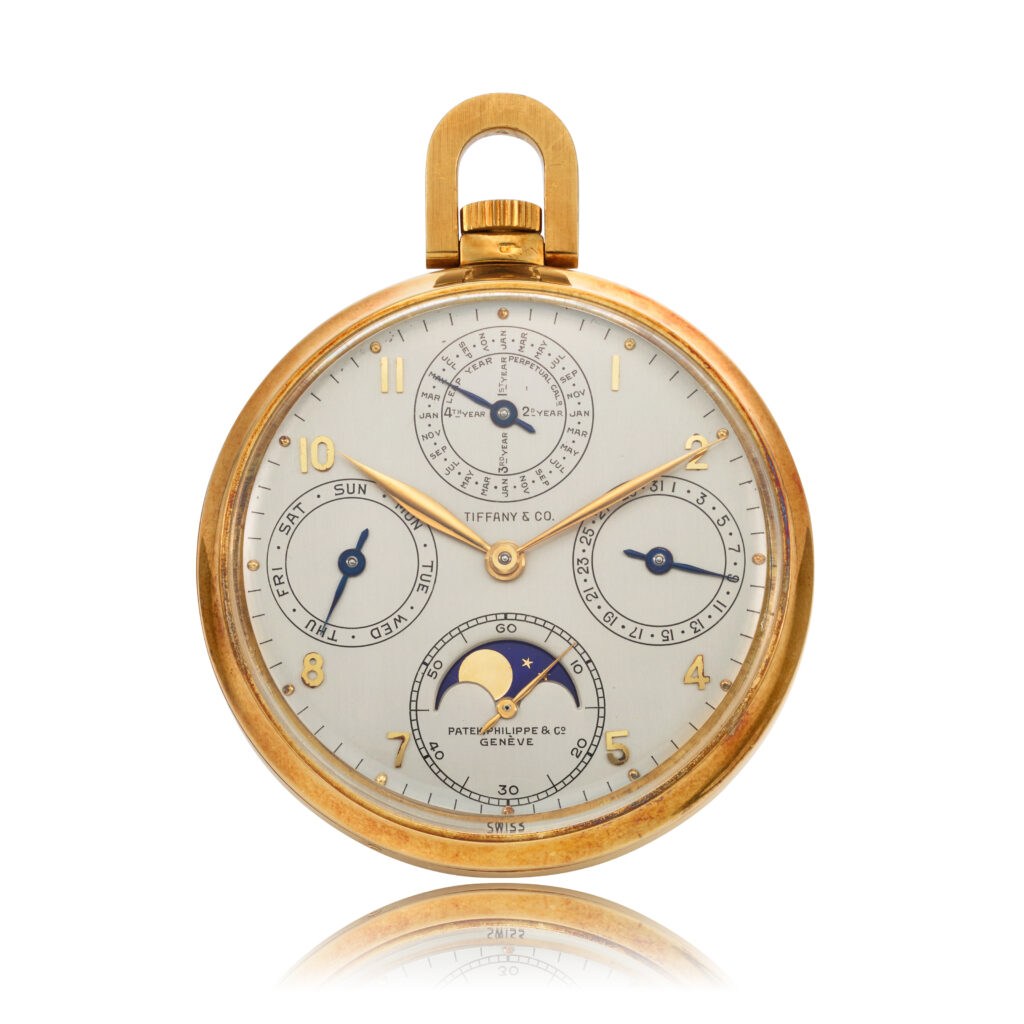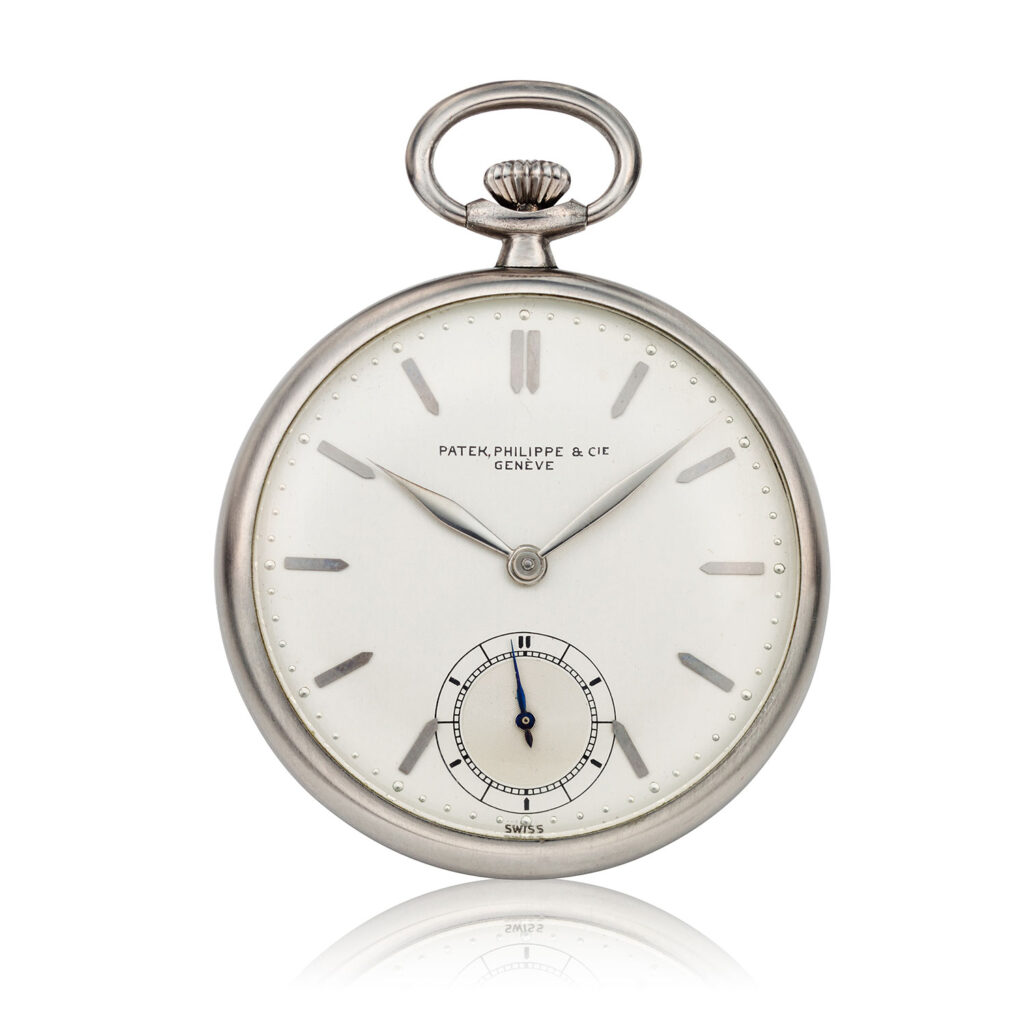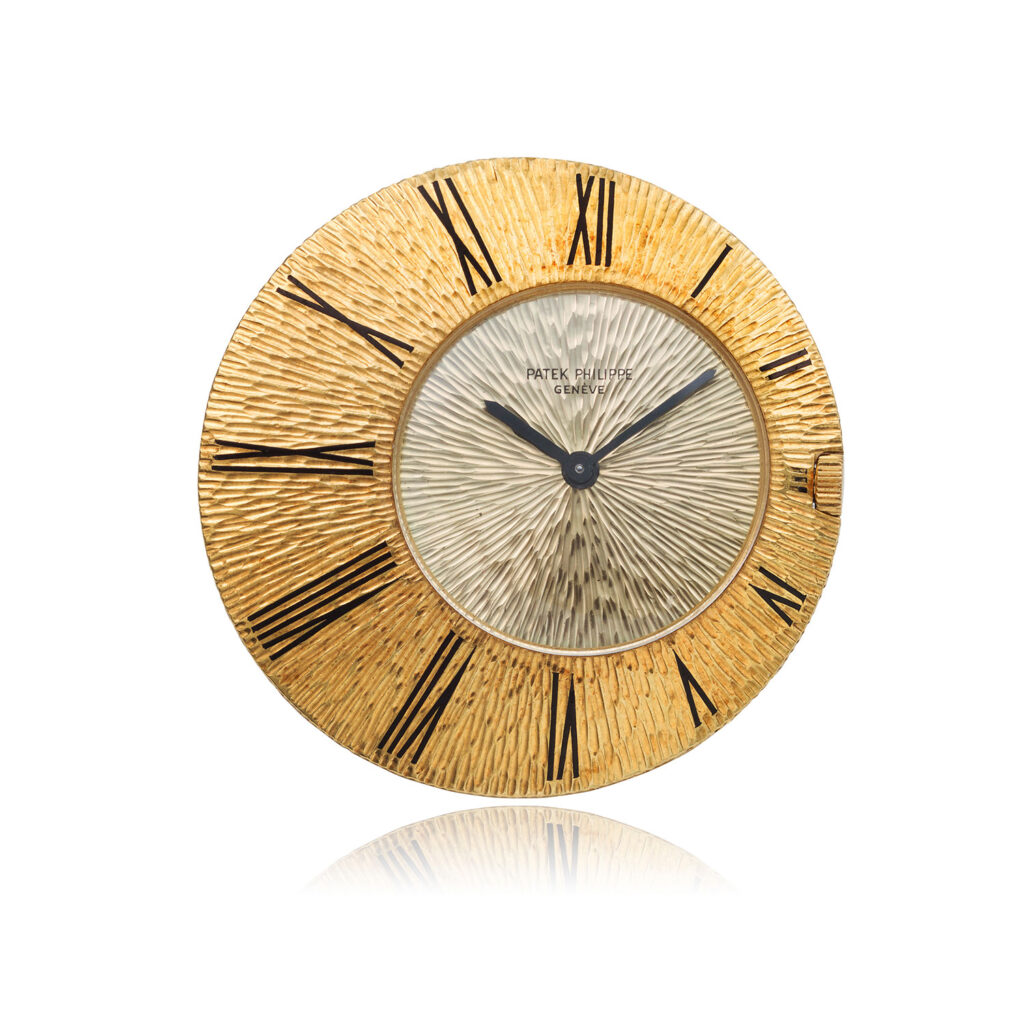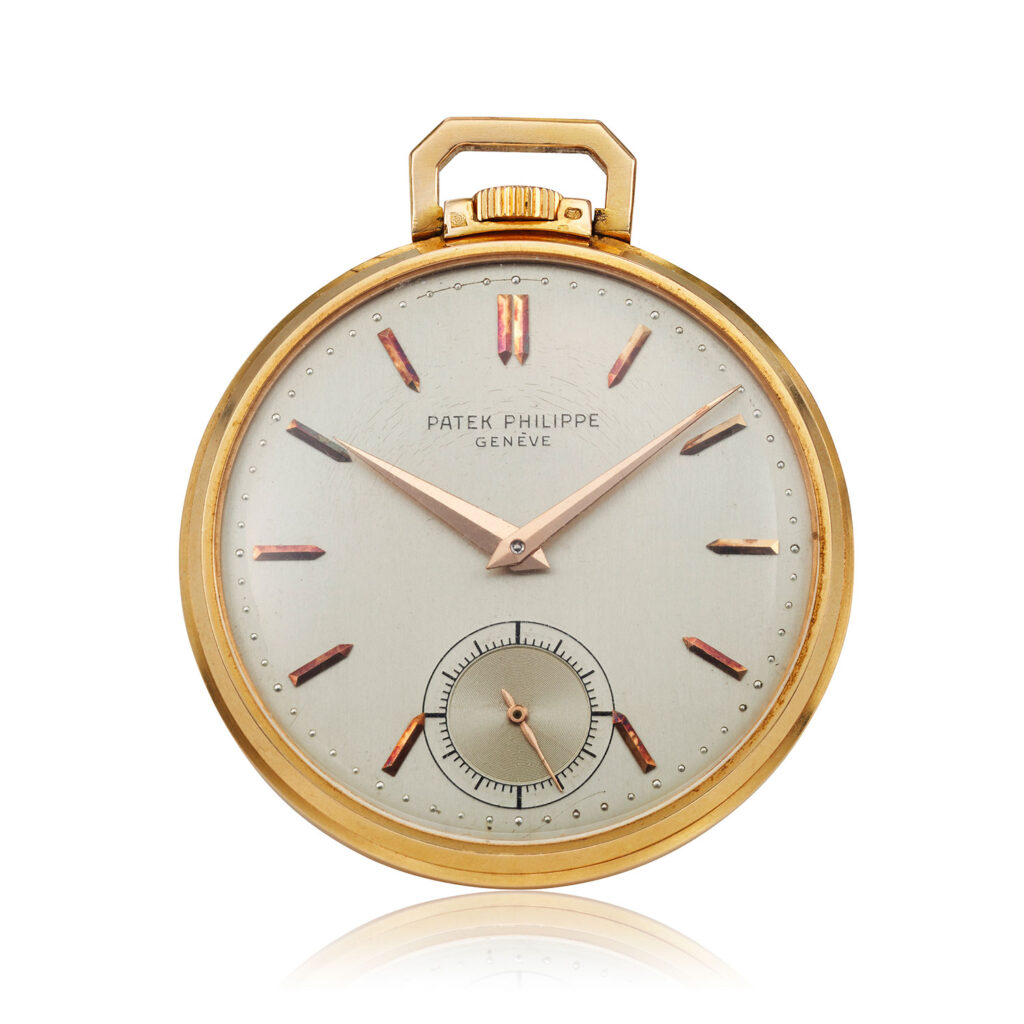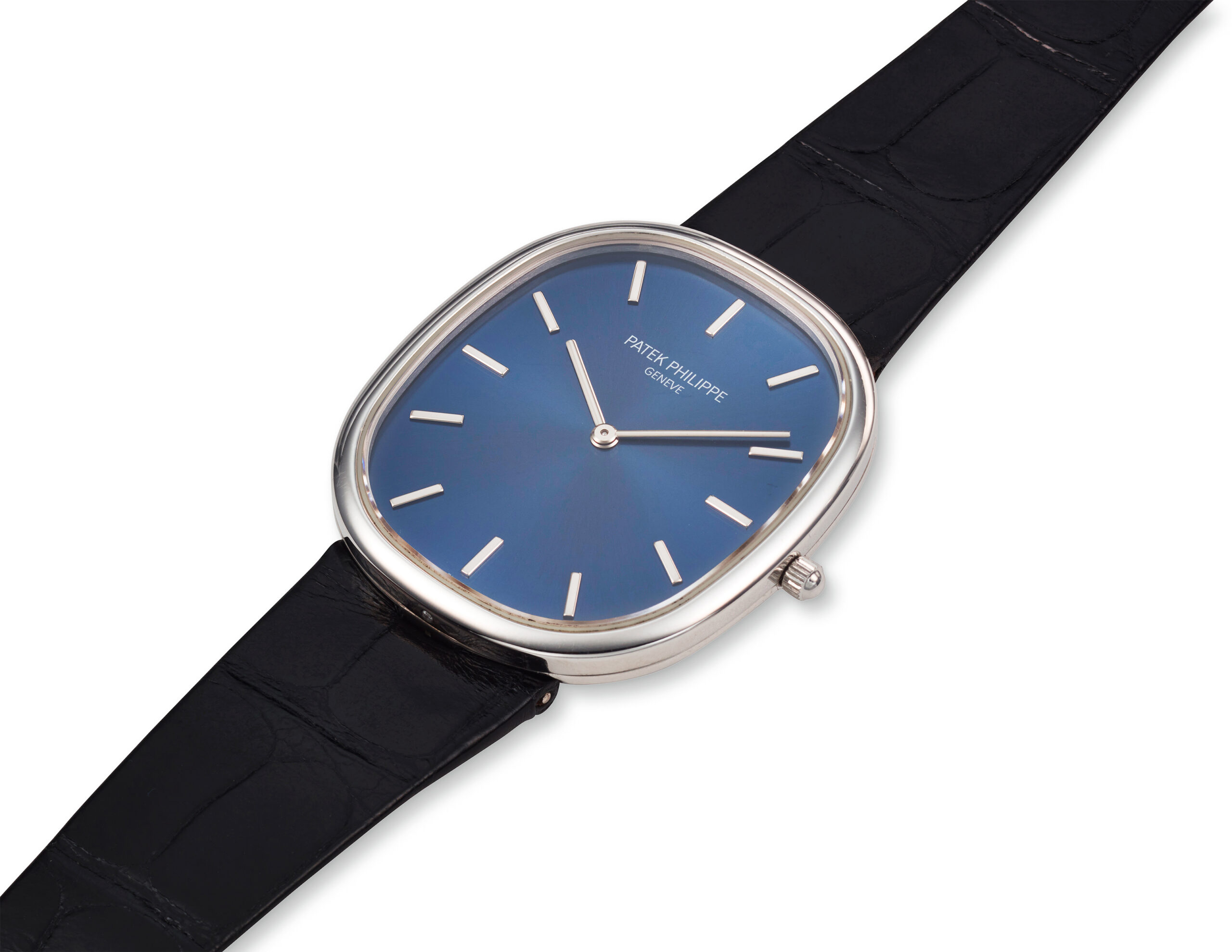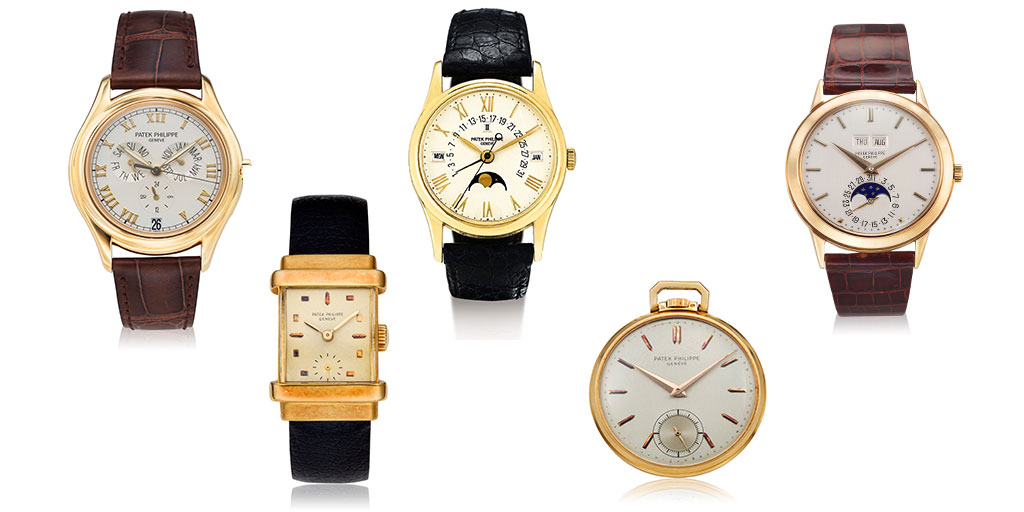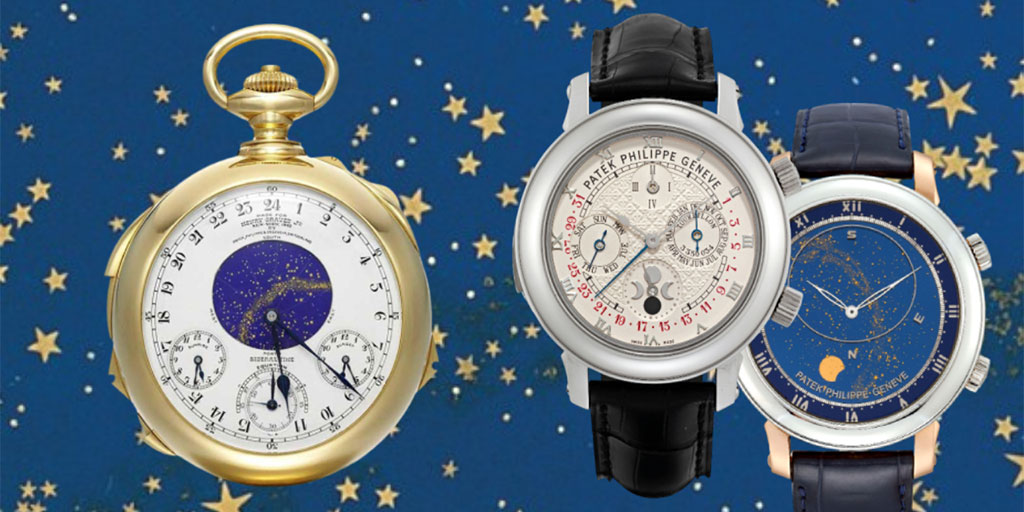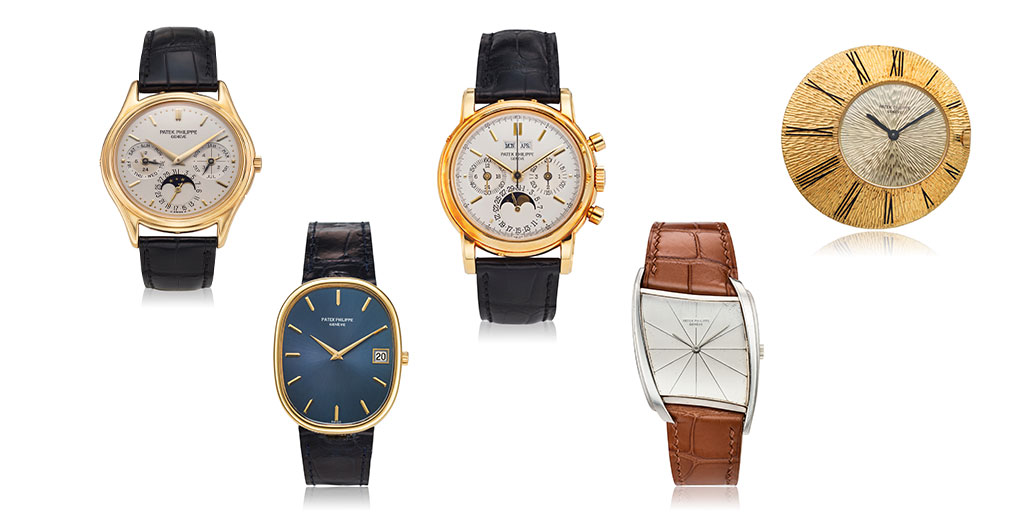S. Smith & Son, founded in 1851 and appointed watchmakers to the Royal family while also supplying precision instruments to the British military and Navy, stood at the center of Britain’s push for technological leadership in timekeeping. Their collaboration with the illustrious movement maker Nicole Nielsen—pioneers in complicated watchmaking and celebrated for uncompromising engineering—resulted here in a movement whose quality was publicly validated at Kew Observatory in 1899. There it achieved an “A” certificate with 70.4 marks in the Complicated category, a distinction that still resonates with connoisseurs of precision today. Only four examples of this model are believed to have been made; two, numbered 148-2 and 148-3, reside in the Clockmakers’ Company Museum in London, while number 148-1 appeared in period advertising. The present watch stands here as a statement of scarcity rivaled only by its technical ambition.
A monumental 59 mm hunter case in solid 18k and weighing in at 239.1 grams, it conveys an immediate sense of importance in the hand. Its four-part construction, including 5 hinges to the inner cuvette and both covers, speaks to the highest English standards of the era. At 6 o’clock, a slide engages the minute repeater, which chimes hours, quarters, and minutes with a tone that is impressively loud, clear, and musical. At 11 and 1 o’clock, discreet pushers command the split-seconds chronograph; elapsed time is tracked on a 60-minute recorder within the 12 o’clock sub-dial that also indicates months and leap year, a clever integration that preserves visual harmony while enhancing utility.
The dial is a work of art unto itself. Executed in white enamel with Roman numerals and signed by Frederick Willis—whose dials were the benchmark for Britain’s best—it arranges the perpetual calendar’s day and date registers and a constant-seconds sub-dial with an aperture for the moon phase. The layout is elegant, legible, and unmistakably English in proportion and restraint. Beneath, the Nicole Nielsen movement powers each complication, a feat of mechanical choreography that rewards the eye and the ear.
What elevates this watch to the level of exceptional is its rigorous engineering, refined aesthetics, and a willingness to push complexity without sacrificing reliability. In an age when top Swiss makers were defining the language of high complication, English houses like Smith & Son answered with creations that were fewer in number, rarer in number, and fiercely sophisticated and dependable. This Grand Complication is the ultimate expression of that moment. It offers the new and the seasoned collector a synthesis of rarity, provenance, and performance that is almost impossible to replicate today.
For those who collect not merely fine watches but milestones, this S. Smith & Son represents the pinnacle of British haute horlogerie. It is a tangible chapter of history—an object that both records time and transcends it—and a compelling opportunity to own the kind of watch that once set the standard and still does.

